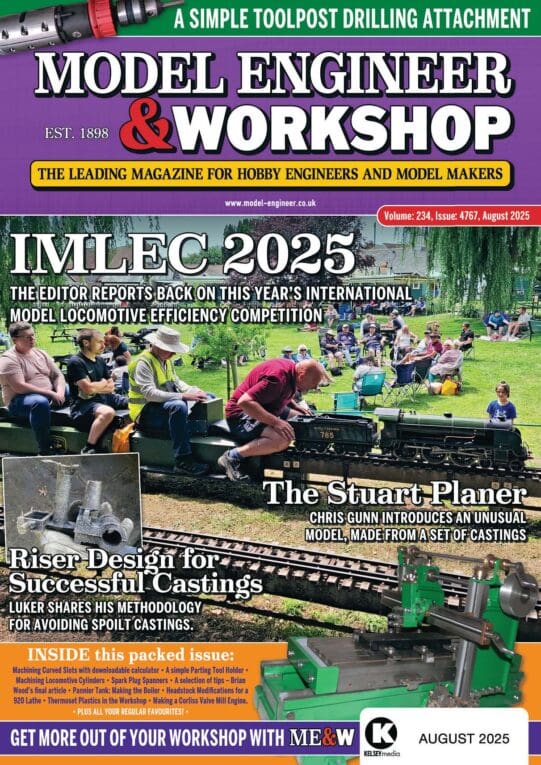By way of a comparison, the U3 was set up with an Arc Euro 6mm square Knife tool. (Not ideal for large metal removal rates).
At 550 RPM the max cut on a 19mm diameter bar was 2.5 mm deep, 5 mm off the diameter. With a 12.7 mm bar a max cut of 3 mm was possible, 6 mm off the diameter. By adjusting the PWM control I could get to a 3.5 mm cut.
As this machine was overhauled by me recently I would consider it to be in as new condition. (There is a post somewhere covering the overhaul). The limiting factor with this machine is the O-ring belt drive. Not due to slippage, but due to the elasticity of the belt itself. This elasticity can set up an oscillation in the drive as the tension in the belt fluctuates. Keeping the tool pressure constant is of key importance. That does not mean I am dissatisfied with the drive system nor am I likely to change it.
The Compact 5 was tried using the same tool. The 19 mm bar at 330 RPM would easily cope with a 4 mm cut, 8 mm off the diameter. This could be increased to 4.5 mm if I used some cutting oil.
At 550 RPM and by way of imitating the Hardinge demonstration. The 12.7 mm bar was reduced to 0.7 diameter in one cut of 6 mm depth.
This machine was new in the late 1980’s. It also has a proper Vee Belt drive and a more powerful Induction motor. Yet the dimensions across the bedways of each machine are the same. What is different is in the design of the cross-slide. Which is about 3 times the length of the U3 and thus has more bearing area, which yields greater rigidity.
EN1A Pb was used throughout.
Like I said earlier these machines do all I ask and metal removal rates do not prove anything. If anything I tend to use the CNC approach, a lot of quick power fed cuts of around 1 mm deep. Timing the use of a tipped tool using this approach it was found to be considerably quicker than one large cut powered by me, by a couple of minutes.
Those of you who have been following the C5 modifications will know I recently added a refinement to the cross slide dial. The bearing adjustment was carried out during the winter months, (7-10 C workshop ambient temperature). When I went to use the lathe yesterday the effort to turn the cross-slide handwheel was not as I remembered it. Slackening the adjustment and resetting restored the correct feel. Workshop ambient was 26 C yesterday.
Regards
Gray.
(Grammar error)






